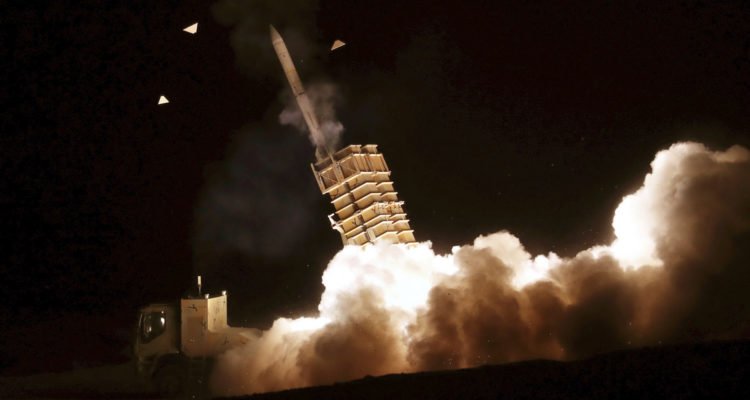
The test of the system took place during war games by the Iranian military this week.
Iran announced that its anti-missile defense system worked “perfectly” when tested during war games this week.
“A solid and multi-layered defense against cruise missile attacks was one of the objectives of the joint specialized air defense exercise of the 1400th Province [Velayat] Sky Defenders,” said an Iranian airbase commander, Brig. Gen. Amir-Qader Rahimzadeh, in a Fars news agency report.
The two-day drill that ended Wednesday was a cooperative venture of the Iranian army and the Islamic Revolutionary Guard Corps (IRGC), which has its own ground, air and naval forces in the country. The IRGC is designated as a terrorist organization by the United States and other countries.
It was a “great success”, according to the general.
“The country’s air defenses are perfectly prepared to protect sensitive and vital installations through a multi-layered defense system,” he said. According to the Iranian Tasnim news agency, this includes missiles that can be shot off several at a time to engage different targets simultaneously, much like Israel’s Iron Dome protective system.
The war games included manned and unmanned aerial vehicles that tried to hit their targets while ground forces operated radar systems to locate them and missiles to knock them out. “Cyber warfare equipment” was also tested, according to an Al-Jazeera report.
The commander of the Islamic Republic’s air defense force, Brig. Gen. Alireza Sabahifard, said that all the systems used were of local manufacture, a point of pride for the Iranian military.
“The equipment we used today are all indigenous and on the cutting edge of modern technology,” he said on state TV.
The exercises took place in the central region of the country, which is where several key nuclear installations are located, including the Natanz uranium enrichment plant in Isfahan. Natanz has been hit twice by sabotage in the 15 months that Iran has blamed on Israel.
In April an explosion destroyed an underground electric grid, causing a fire that destroyed or damaged possibly as many as 2,000 centrifuges, which separate uranium isotopes that can be used in nuclear weapons. In July 2020, three quarters of the above-grounds part of the site was damaged by a powerful bomb.
Other sites linked to Iran’s nuclear program have been hit as well over recent years, but only one was ever claimed to be an airborne attack. In June, the New York Times reported that a centrifuge manufacturing company in Karaj was hit by a small drone launched near the facility by unknown perpetrators.
Israeli leaders have never taken responsibility for any direct attacks on Iran, but they have said time and again that they would not allow Tehran to obtain nuclear capability.
On Wednesday, Foreign Minister Yair Lapid reiterated Jerusalem’s position in a meeting in Washington with U.S. Secretary of State Antony Blinken and UAE Foreign Minister Abdullah bin Zayed.
“Israel reserves the right to act an any given moment, in any way,” he said. “That is not only our right, it is also our responsibility. Iran has publicly stated it wants to wipe us out; we have no intention of letting that happen.”
(World Israel News).